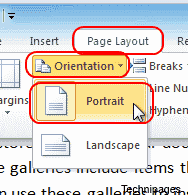

For now, here’s how to set up a letter template for short (one-page) letters. Luckily, Word allows you to have a different header just for the first page of any document, and a little later we’ll see how to do that. If you’re unsure how to do that, check out our guide on inserting page numbers in Word. Any text you put in a header appears on every page of the document, and you won’t want the letterhead on your second sheets. If you were using page number, and want to continue them in this section, you’ll need to insert the page numbers and then tell Word to start those page numbers off from a particular point. Enter some or all of the data that you want on your cover (1st) page (or simply hit the return key a few times) Choose. If it’s the same material as in the first section of your document, you can just copy and paste it from there, and it will then appear in the rest of your document (except in the new section you created, of course). A header area will appear on the first page. Put your cursor in the first page, then choose Insert Header First Page from the pulldown menus. Now, all you have to do is create the header or footer you want to use for the rest of the document. Then select the style to use for the next page (pick one from the menu - such as Default ). Again, the button becomes de-selected, because you’ve now broken the link to the header or footer area of that new section you made. On the Design tab in the Header & Footer Tools area of the Ribbon, click the “Link To Previous” button. The header and title should be in plain text. Times New Roman) Put each piece of information on a separate line, and don’t use periods or other punctuation at the end of each line. Now, activate the header or footer area on the first page of that new section. The MLA header follows the same format as the rest of an MLA paper: 1-inch margins. Now the watermark is added on the 2nd page only of current Word document.On the “Layout” tab, click the “Breaks” button, and then choose the “Next Page” option. Place cursor at header of the 2nd page, click Design (or Page Layout in Word 2007/2010) > Watermark, and then select a watermark from the Watermark drop down list. Put cursor at the header of the 3rd page, and click Design (under Header & Footer Tools) > Link to Previous to remove the text of Same as Previous in the 3rd page.Ħ. Now the text of Same as Previous is removed from the header of the 2nd page.ĥ. Please click Design (under Header & Footer Tools) > Link to Previous. Now the Header & Footer Tools are enabled.

And now you will see the text of Same as Previous below header line. Double click the header of the 2nd page to show the header area. Go to the end of the specified page (the 2nd page in my case), and click Layout (or Page Layout in Word 2007/2010/2013) > Breaks > Next Page.ģ. Go to the beginning of the specified page (the 2nd page in my case) you will add watermark, and click Layout (or Page Layout in Word 2007/2010/2013) > Breaks > Next Page. Next, tick the checkbox for Different First Page under the. A Design tab will now appear where you have all the options and customizations for Header and Footer. Here, I will describe the detailed steps to add watermark to the specified one page only.ġ. How do I have a header on first page only To add a header only to the first page in Word, double-click on the header portion at the top of the first page of the document. This setting will give the first page a different header and footer from the rest of your document. On this tab, in the Options group, click to check the Different First Page option. The Header & Footer Tools > Design tab will appear. For example I have a Word document with 7 pages, and want to apply watermark to the second page only. To insert a header only on the first page in Word, double-click on the header section to make it active.


 0 kommentar(er)
0 kommentar(er)
